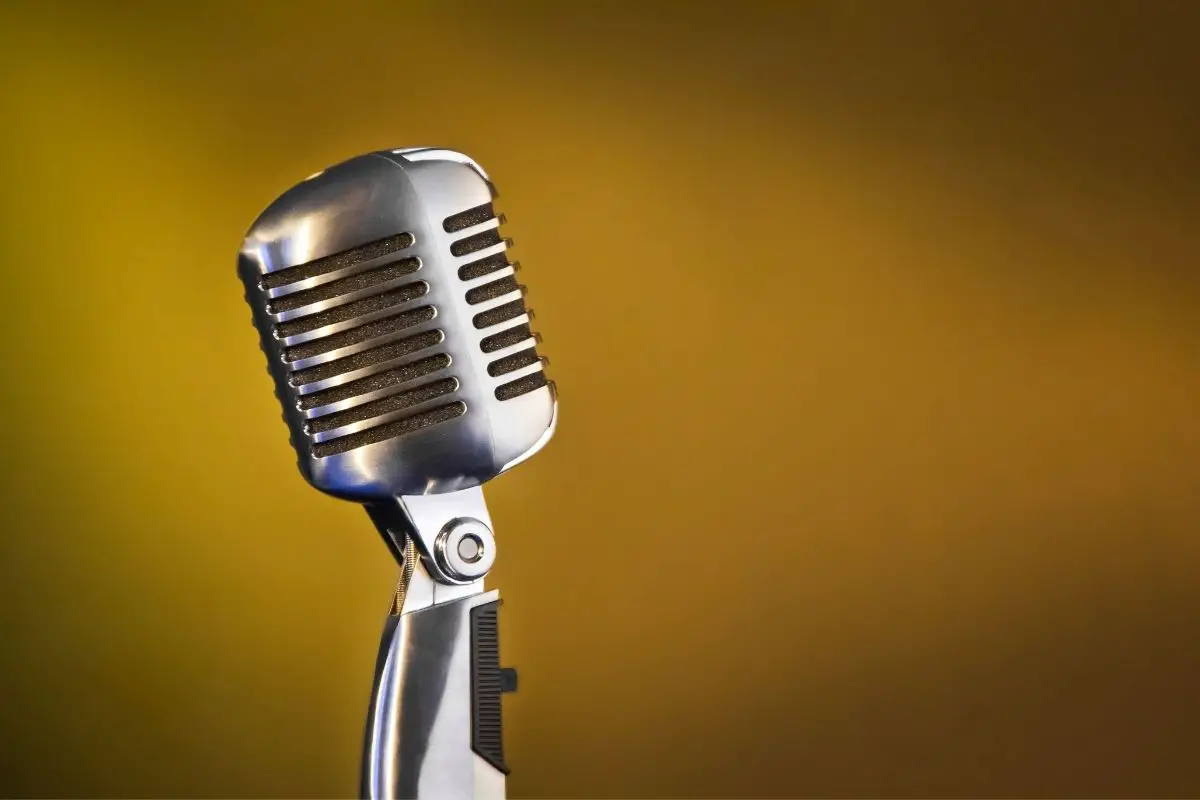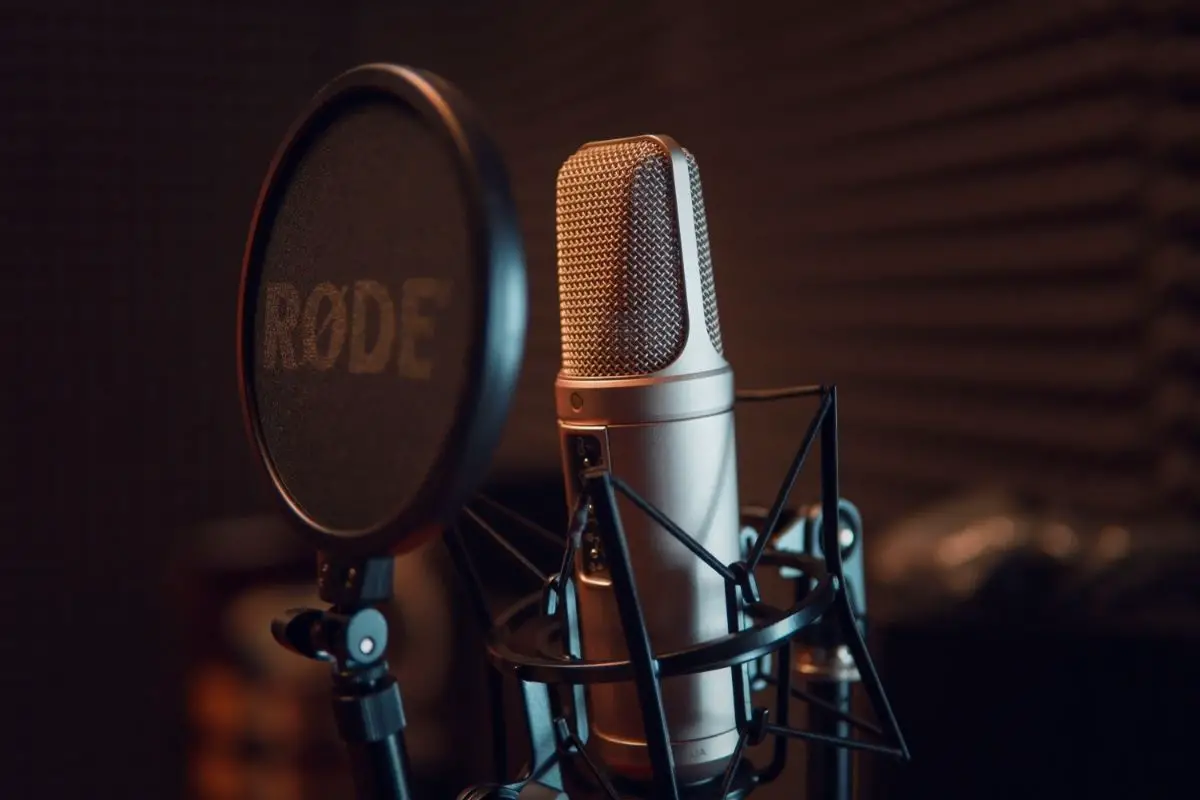Any good podcast worth its salt will need to ensure that it has the best microphone possible and that that microphone is set up in a way that maximizes its potential.

Are you looking for some great tips to help you learn how to set up your microphone? Join me below to find some of them out!
Table of Contents
Tip 1 – Get The Right Microphone
The first thing you will need to do is pick up the perfect microphone.
Make sure you strike a perfect balance between function and price.
Tip 2 – Choose The Right Space To Record In
Once you have your microphone, you want to choose somewhere that you can work.
Aim for somewhere comfortable that does not have too much potential noise that could ruin your recordings.
Tip 3 – Place The Microphone Properly
You want to ensure that the angle is perfect so that your recordings are picked up and so that they are never too loud or too quiet.
Tip 4 – Buy A Shock Mount
A shock mount is perfect for ensuring that vibrations such as accidentally knocking the desk do not get picked up by the microphone.
This means you don’t have to sit absolutely still as you record.
Tip 5 – Buy A Pop Filter
A pop filter helps you maintain a perfect distance between your mouth and your microphone and
helps to ensure that your recordings don’t become polluted by strange popping noises caused by your mouth moving.
Tip 6 – Buy A Foam Filter
Like pop filters, Foam filters help make your recordings sound much smoother.
It helps to ensure that your listeners enjoy the listening experience much more.
Tip 7 – Get The Right Cables
You will want to make sure that you pick out cables best suited to the realm of podcasting.
Higher quality wires can better convert your sound recording into digital data to be transmitted across the internet to your loyal listeners.
Tip 8 – Get The Right Recording Interface
You want to make sure that you find a perfect audio recording interface that you know how to control
and that works best for your needs. Use one that allows you to fine-tune your settings and is easy enough to understand.
Tip 9 – Get A Mic Activator
A perfect mic activator can make or break a good podcast series. Mic activators are designed to be attached to your microphone and help
to increase the fidelity of converting audio recordings to digital data, so your podcast will sound better than ever.
Tip 10 – Get The Perfect Pair Of Headphones
You will want to make sure that you get a perfect pair of headphones that allows you to hear everything you
are recording as you record it to always be sure what is being picked up by your microphone.
Choose headphones with low latency so that you don’t get left behind.
Tip 11 – Take Care Of Your Microphone
The best way to ensure that your podcasts sound incredible is to ensure that
your microphone is properly maintained between uses. Make sure to store it correctly and safely.
Tip 12 – Monitor Your Audio Levels
You want to make sure that your podcast is never too loud or too quiet, which can put listeners off for good.
Aim to record at around -10 to -12dB. This is a perfect range to record for fidelity and clarity.

Tip 13 – Monitor The Volume Levels Of Your Microphones
You may need to use multiple microphones for shows with numerous guests, so make sure that the audio level of each microphone is suitably adjusted.
Tip 14 – Adjust Your Sampling Rate
The sampling rate refers to the number of small chunks of sound picked up by your microphone and converted to digital information.
Audio with a higher sampling rate has better fidelity; therefore, lower sampling rates have lower fidelity.
However, lower sampling rates allow for recordings to be done more efficiently, so striking a balance between fidelity and efficiency is crucial.
Tip 15 – Save Your Files Appropriately
Once you have made your recordings, you will want to ensure that they are efficiently saved on your device.
Try to save your file in a ‘.wav’ type file without compressing the audio. This ensures no quality is lost.
Tip 16 – Choose Mono Or Stereo Audio
I recommend recording your audio in a mono channel, especially if your podcast is simply a chat podcast
with multiple microphones. This ensures that your voice is crystal clear and smooth.
Tip 17 – Make Sure That Your Audio Files Are The Right Size
You will want to ensure that the file sizes of your audio recordings are not too large, as larger file sizes could cause your editing software to chug.
Aim for your recordings to be between 30 megabytes to 60 megabytes.
Tip 18 – Keep A Checklist
To ensure that you meet some of these tips to make your podcast sound great, you may want to choose to keep
a checklist that you can check off before recording every episode so that your series remains truly consistent in quality.
Tip 19 – Try To Limit Mixing
If your podcast is quite simple and mostly sits within the chat genre, then try to keep your mixing to a minimum, as it prevents you from
running the risk of wasting time and causing your podcast to sound overedited and thus uncomfortable to listen to.
Tip 20 – Listen To Your Podcast Once Finished
Try taking your finished podcast episode into your car or into another space you might expect someone to listen
to a podcast to ensure it sounds clear no matter where you listen to it. This is perfect for attracting and retaining listeners.